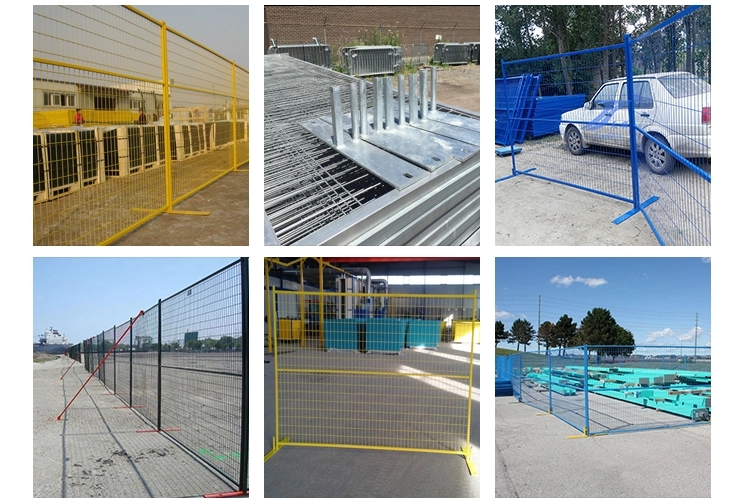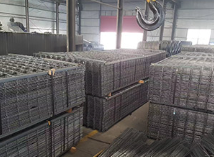Lug . 06, 2025 08:39 Back to list
High Quality Concrete Steel Welded Wire Reinforcing Mesh Manufacturer Durable Mesh for Foundations & Construction
- Introduction to Concrete Steel Welded Wire Reinforcing Mesh
- Technical Advantages and Material Science
- Comparison of Manufacturers and Market Options
- Custom Solutions and Product Configuration
- Application Cases in Modern Construction
- Performance Data and Market Trends
- Conclusion: Why Choose Concrete Steel Welded Wire Reinforcing Mesh

(concrete steel welded wire reinforcing mesh)
Introduction to Concrete Steel Welded Wire Reinforcing Mesh
Concrete steel welded wire reinforcing mesh is an essential component in modern construction for reinforcing concrete with precision and durability. This mesh is manufactured from high-tensile steel wires, which are welded together at intersections to form a robust grid structure. Globally, the demand for reinforcing mesh has surged, underlining its critical role in projects ranging from civil infrastructure to advanced architectural designs. According to a 2022 industry report, the global welded wire mesh market size reached USD 9.8 billion, and it is expected to grow at a CAGR of 5.7% through 2028. The core benefits stem from its scalability, cost-efficiency, and ability to meet conforming standards such as ISO 6935 and ASTM A1064. As concrete construction evolves, the market consistently favors high quality 8mm steel bar a393 f72 q188 concrete mesh to meet the challenges of load demand and structural integrity in applications such as foundations, slabs, sheer walls, and columns.
Technical Advantages and Material Science
A key innovation of concrete steel welded wire reinforcing mesh
lies in its material properties and technical architecture. Modern mesh types, such as q188 concrete steel reinforcing mesh high strength and mesh steel fabric, are engineered to deliver exceptional yield strength (typically 460 MPa and above) and ductility, minimizing the risk of structural cracks in reinforced concrete environments. For example, the widely utilized High Quality 8mm Steel Bar A393 delivers a tensile strength exceeding traditional wire meshes by up to 15%. Furthermore, new processing technologies, like resistance welding and automated wire alignment, ensure precise geometry and uniform stress distribution throughout the mesh sheet. In corrosion-prone or highly visible environments, stainless steel reinforcing chain for cabinet applications and stainless decorative metal wire mesh introduce additional resistance and aesthetic appeal, meeting both functional and design requirements. These technical advantages ultimately translate into safer, longer-lasting, and visually compelling structures.
Comparison of Manufacturers and Market Options
Choosing a concrete steel welded wire reinforcing mesh manufacturer requires careful consideration of several factors, including manufacturing capacity, technical standards, quality management systems, and customization capabilities. Below is a comparative table detailing key aspects of leading global manufacturers based on publicly reported data from 2023:
| Manufacturer | Annual Production (tons) | Mesh Variants | Certifications | Lead Time (weeks) | Customization | Export Markets |
|---|---|---|---|---|---|---|
| SteelGrid Solutions | 120,000 | A393, F72, Q188, Stainless, Custom | ISO 9001, ASTM, CE | 2-4 | Extensive: Fabric, Gauge, Panel sizes | North America, EU, Asia |
| WeldMesh Industries | 85,000 | A393, Q188, Decorative | ISO 9001, BSI | 3-5 | Selective: Gauge and Material | EU, Middle East |
| MeshMaster Group | 150,000 | A393, F72, Stainless, Architectural | ASTM, UL Certified | 1-3 | Full Custom (CAD-based) | Global |
As the table shows, production volumes, technical options, and lead times vary significantly. Clients seeking bespoke solutions for complex projects are advised to select manufacturers with advanced customization and international certification portfolios.
Custom Solutions and Product Configuration
The design flexibility of concrete steel welded wire reinforcing mesh systems accommodates a vast array of project-specific applications. Leading manufacturers offer configuration options in bar diameters (ranging from 4mm up to 14mm), aperture sizes (50mm x 50mm up to 200mm x 200mm), sheet length and width, as well as unique forms such as bent or rolled meshes. For large-scale civil infrastructure, large-format mesh panels with welded lap joints ensure speedy installation and reduced labor hours by up to 40%. In contrast, architects may prefer stainless decorative metal wire mesh for cabinet reinforcement or façade features, offering both strength and design versatility. Moreover, high-performance products such as A393 F72 and Q188 concrete meshes are typically available as either uncoated or epoxy-coated to withstand aggressive environments. Modern CAD-driven fabrication facilities now allow fully tailored mesh geometries to meet load paths and spatial restrictions of complicated superstructures, resulting in optimal performance and efficient resource use.
Application Cases in Modern Construction
The usage of concrete steel welded wire reinforcing mesh spans across commercial, residential, and industrial projects, showcasing its broad impact and adaptability. Notably, its adaption in reinforced concrete slabs for multi-storey car parks in London demonstrated a 25% reduction in steel consumption over traditional rebar. Also, bridges designed with high strength mesh exhibit up to 20% increased load-bearing capacity plus improved resistance to fatigue and corrosion. In Australia, the adoption of mesh steel fabric in highway pavements reportedly extended the service life of certain routes by 15 years thanks to superior crack control and consistent concrete cover. Designers of luxury retail stores frequently specify stainless steel reinforcing chain for cabinet in the internal fitting to combine security with accent aesthetic. Each case underscores the mesh’s inherent advantages: speed of installation, consistent material quality, and mechanical reliability.
Performance Data and Market Trends
Recent performance evaluations demonstrate marked improvements with welded wire reinforcing mesh compared to traditional reinforcement. Laboratory testing indicates welded mesh slabs can achieve a flexural strength up to 550+ MPa, compared to an average 450 MPa in conventional bar-only slabs—a 22% increase. As market demands evolve, innovations continue: manufacturers report a 30% uptick in demand for corrosion-resistant and decorative stainless steel mesh in 2023. The shift toward sustainable construction has driven interest in mesh products that reduce material wastage: mesh offcuts typically account for less than 5% of total steel used, in contrast to up to 14% for manual rebar cutting. Emerging markets in Southeast Asia and Africa are driving further adoption, with infrastructural projects in these regions projected to increase the global demand for high strength concrete foundations mesh by 8% annually through 2027.
Conclusion: Why Choose Concrete Steel Welded Wire Reinforcing Mesh
In summary, concrete steel welded wire reinforcing mesh, with its combination of engineering strength, product consistency, and design adaptability, stands as the superior choice across a spectrum of construction challenges. Leveraging the strengths of high quality 8mm steel bar a393 f72 q188 concrete, mesh steel fabric, and stainless options, professionals ensure enhanced performance, accelerated timelines, and cost-effective solutions in demanding environments. When selecting a concrete steel welded wire reinforcing mesh manufacturer, scrutiny of technical, certification, and customization capabilities further maximizes project success. As infrastructure and design standards rise, the continued integration of welded wire mesh secures its place as the cornerstone of safe, reliable, and innovative construction worldwide.

(concrete steel welded wire reinforcing mesh)
FAQS on concrete steel welded wire reinforcing mesh
Q: What is concrete steel welded wire reinforcing mesh used for?
A: Concrete steel welded wire reinforcing mesh is primarily used to reinforce concrete structures, such as floors, walls, and slabs. It enhances the structural integrity and load-bearing capacity of concrete.Q: What makes high quality 8mm steel bar A393 F72 Q188 mesh desirable for construction?
A: High quality 8mm steel bar mesh like A393, F72, and Q188 offers superior tensile strength and durability. This ensures enhanced safety and longevity in concrete reinforcement.Q: Can stainless steel reinforcing chains and decorative mesh be used in cabinetry?
A: Yes, stainless steel reinforcing chains and decorative metal wire meshes are often used in cabinets for both structural support and aesthetic enhancement.Q: What are the benefits of purchasing from a concrete steel welded wire reinforcing mesh manufacturer?
A: Buying directly from a manufacturer guarantees product quality, competitive pricing, and custom solutions tailored to specific project needs.Q: Why is mesh steel fabric important in concrete foundations?
A: Mesh steel fabric reinforces concrete foundations, reducing the risk of cracks and structural failure. It distributes loads evenly and increases overall durability.-
Leading Galvanized Steel Fence Factory | Durable & Secure Fencing
NewsAug.24,2025
-
Welded Wire Mesh for Industry Factory - Durable & Custom Solutions
NewsAug.23,2025
-
Your Galvanized Steel Fence Factory - Strong, Durable Solutions
NewsAug.22,2025
-
Welded Wire Mesh for Industry: Factory Direct & Custom Solutions
NewsAug.21,2025
-
Welded Wire Mesh for Industry | Factory Direct & Durable Solutions
NewsAug.19,2025
-
Chain Link Fence-Anping County Puersen Hardware Wire Mesh Co., Ltd.|Durable Security&Versatile Applications
NewsAug.18,2025

